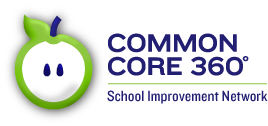Sometimes focusing on the skills and standards of the content area can make keeping an eye on reading a balancing act. Yet all teachers can help influence and support reading development in students. It doesn’t mean we have to squeeze more into our already-tight schedules. As content area specialists, we have the skills and understandings needed to help students read as historians, scientists, computer programmers, mathematicians, art historians, musicians, and more.
Think of it this way: if we’re going to hand our students a text on a specific aspect of our content, we already know what we want them to gain from that experience. There is a reason, a purpose, behind reading that. What is it? We need to take the opportunity to share with students how we’ve read that text and gained information from it. In other words, we need to teach them how to read as a scientist, historian, mathematician, computer programmer, and more. How can we go about doing that? Consider these steps as a possible process:
- What is the purpose for reading this text? Write a question, a deep, powerful question that has an answer clearly connected to the text and the concepts the class is currently studying. Draft the question. It can always be revised later. For example, a social studies teacher might have students read the Gettysburg Address as part of a study on the Civil War. One question a teacher might ask students is, “How is Lincoln’s Gettysburg Address an important speech in the Civil War?” For a math example, consider asking, “What is the purpose of this kind of problem? Why do students need experience with this kind of problem?”

- What did we notice as we read the text ourselves? Think this through. As a historian, scientist, musician, or other specialist, what stood out and why? Make note of that. This can help us guide our students to notice those things as they read. Remember that in a K-12 setting, students have been reading to learn for nine years at the most. They don’t have the years of experience and practice that we do in reading and thinking like a specialist. We need to make that process transparent for students. By asking them to focus on certain parts of the text, and asking them specific questions, we can help them begin to see what is critical in our thinking as specialists. Going back to the Civil War example, a teacher might ask, “Why does Lincoln refer to the Revolutionary War and founding of the country?” Another question might be, “What does Lincoln call on the living to do? Why do you think he would do this?” Using our math example, think through how you’ve read the problem. Try asking questions such as, “How can I represent this in a visual way? ” Or “Is there information here that isn’t important for solving the problem?”
- Consider sharing our own thinking and observations as a “think-aloud.” This step should follow guidance and questions, so that students can develop their own “read-like-an-expert” skills, but after doing this, sharing our own thought process models for students what a specialist is considering while reading. Referring to our math example, talking through how you thought through the problem, pulled the information you needed, and then set up the equation necessary to solve it shows learners how a mathematician thought it through.
- Connect the text back to the concepts and skills currently being developed. While it might be very clear to you why the text is part of this study, sometimes students don’t see those connections as clearly. A couple of carefully constructed questions for small-group and whole-class discussion can help students make those connections, which deepens their understanding. In the Civil War example, questions such as, “What was happening in the war at this point in time?” Or “How might readers have viewed this speech in light of the battles happening in November 1863, such as the Battle of Chattanooga?” Could help students consider this speech in the context of the larger war. In mathematics, comparing the problem to one the students have solved before helps them see connections.
Teaching our students the literacy skills they need to be successful in our content areas doesn’t have to be difficult. By taking a few minutes to craft questions, guide students toward seeing key parts of the text, share our own thinking as specialists, and connect the text to the larger concepts, we are helping students gain deeper understanding and increasing skills in our subject areas. Their increased understanding, skill, and confidence is well worth it.
Looking for some good resources to support content area studies and reading together? Consider looking at resources from Literacy Design Collaborative, and Achieve the Core.
The math problem used here can be found on the EngageNY.org web site: https://www.engageny.org/resource/grade-6-mathematics-module-3, lesson 4.
